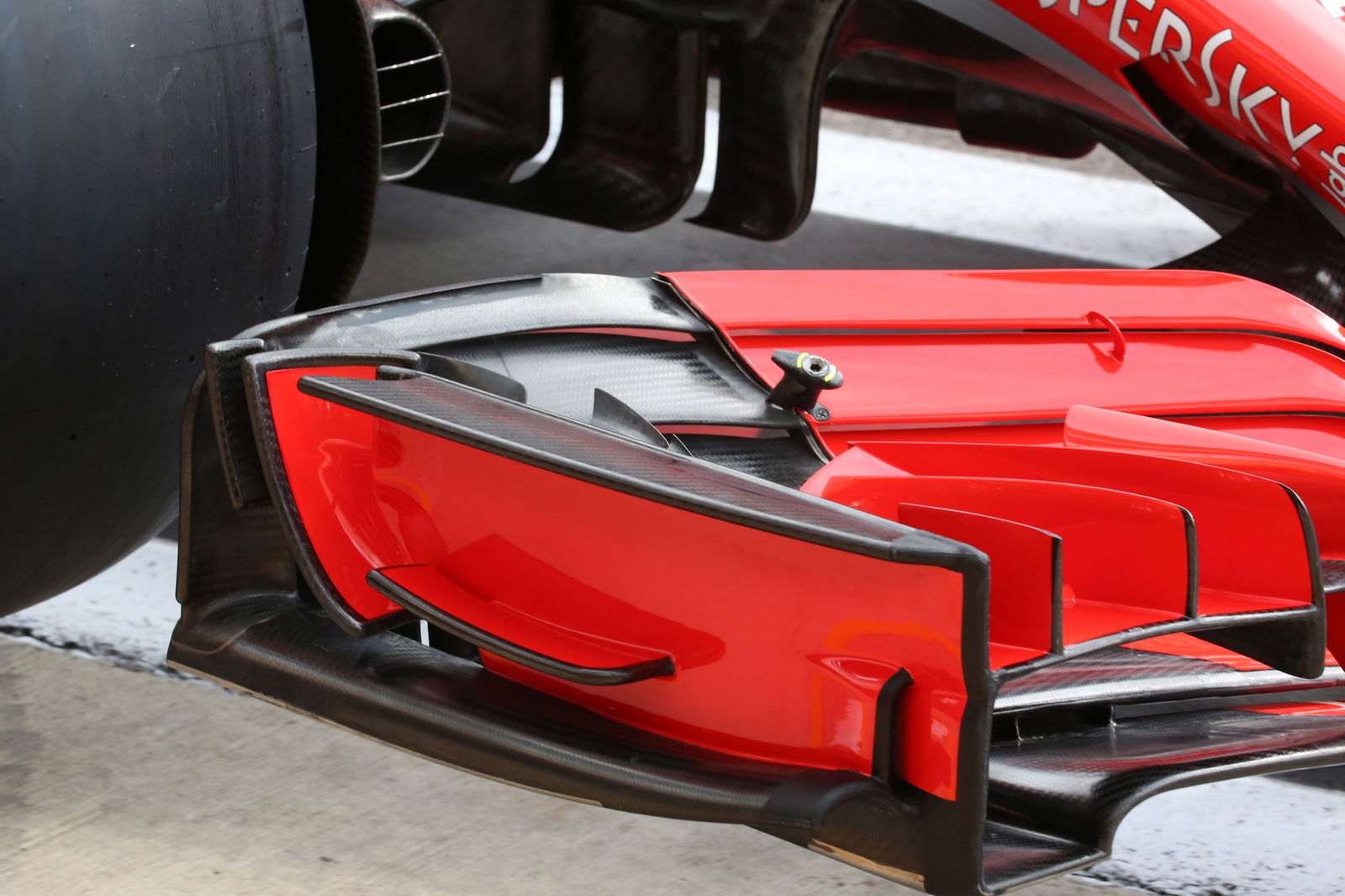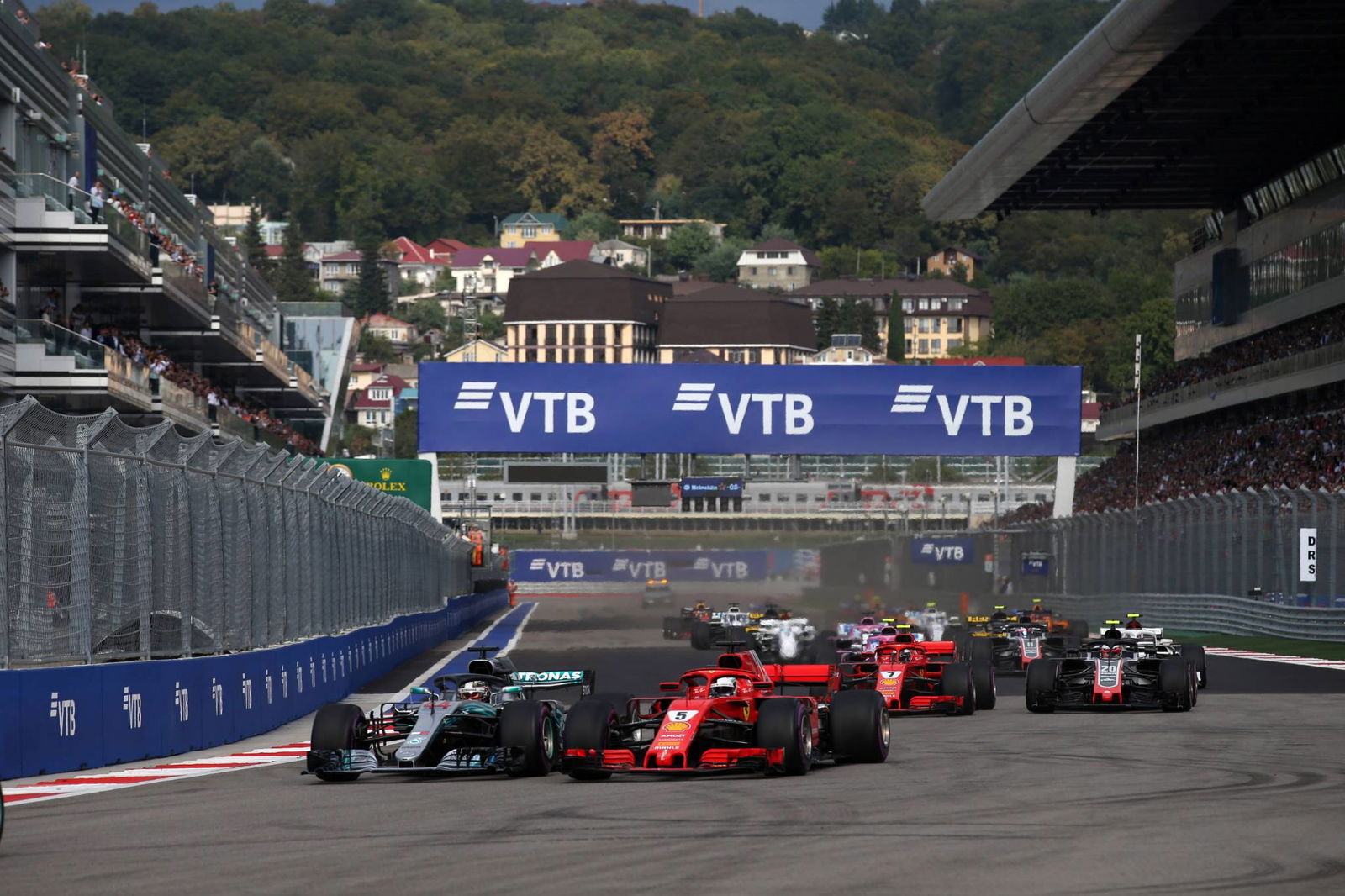How Mercedes and Ferrari's tech updates spark 2008 memories
Just when we thought things were winding down on the technical front for 2018, the two Formula 1 title protagonists unveiled a series of bold upgrades to their cars for Sochi.
Their technical duel resembles that of McLaren and Ferrari’s 2008 development battle, which ultimately cost them both dearly in 2009 following a complete overhaul in the aerodynamic regulations.
.jpg?width=1600&aspect_ratio=16:9)
Just when we thought things were winding down on the technical front for 2018, the two Formula 1 title protagonists unveiled a series of bold upgrades to their cars for Sochi.
Their technical duel resembles that of McLaren and Ferrari’s 2008 development battle, which ultimately cost them both dearly in 2009 following a complete overhaul in the aerodynamic regulations.
This time around, for Mercedes and Ferrari, that fear of being caught with their proverbial pants down might well be alleviated by the fact that both teams have ample resources to tackle next year’s major rule change: a more simplistic front wing.
The developments seen in Russia from both camps show that no stone is being left unturned in the off-track battle, as both teams seek influence from each other and elsewhere on the grid to try and strike a decisive blow in what has been an enthralling season thus far.
MERCEDES
Changes to the W09 for Sochi were widespread, but the most obvious one was to the rear wing: the way it is braced to the chassis to be specific. Not featured on the Mercedes since the team’s all-conquering 2014 season, a pair of swan-neck pylons were used to support the wing rather than the single Y-lon – the single pylon that splits around the exhaust exit – that has been preferred for the best part of the last four seasons (see illustration above).
The dual support layout has been used by their red rival for the past couple of years, and it offers mostly aerodynamic benefits over the solitary pylon. Every square millimetre of the underside of the wing is exploited to produce vital downforce, so teams take considerable care in designing the supports.
The single support on the Mercedes breached this critical surface, causing the airflow to detach behind it. The easiest way to alleviate this problem is to loop the support over in front of the wing’s leading edge and attach it to the wing’s upper surface from above. Supporting the wing in tension is quite difficult to achieve using a single structure, so two are employed to share the load.
This setup is also a good example of how a well-designed mechanical system can bring an aerodynamic performance increase, which is typical of modern engineering techniques in Formula 1. By dividing the aerodynamic load of the wing across two supports, each pylon’s cross sectional area can also be reduced and thus the blockage of the airflow over the wing.
A further advantage of the twin swan-neck system is in freeing up the centreline area of the rear wing. A clear channel of air can now make its way along the middle of the wing; uninterrupted by support structures, the air can also be influenced by the exhaust plume exiting below. Mercedes have augmented this effect by placing a horizontal vane across the two supports to fine-tune the plume’s position using the air passing underneath the wing.
However, while each of the two pylons may be individually thinner and lighter than the single one used before, the addition of an extra support brings an overall weight gain. This extra mass is located in a relatively high position on the car where extra fasteners are used to join the supports to the wing’s main plane; this raises the centre of gravity, which has already been heavily disturbed by the introduction of the Halo for this year.
For qualifying, and indeed the race on Sunday due to parc ferme regulations, the new supports were abandoned, although they appeared to be used in conjunction with a higher downforce setup when tested on Friday. It is therefore likely we will see them again soon at venues which require more aerodynamic grip.
Other changes to the car did make the cut for the rest of the weekend. The front wing cascade winglet was extended to meet the endplate, and a small pair of canards were installed immediately behind to complete what has become a further and further cluttered area of the W09. Many of these features will be obsolete from 2019, but this hasn’t stopped the Silver Arrows from exploiting every region of the car to gain the upper hand in the technical battle.

FERRARI
Meanwhile at Ferrari, substantial work has been put into a new front wing which both drivers have taken on with immediate effect. A number of aspects of the wing have been modified, which in total have redefined the Scuderia’s concept in this area of the car.
Most of the new features take inspiration from Red Bull. The upper flaps are less sinuous, their angle of attack constant across the wing span to provide more downforce than before. The endplate has also received Red Bull-esque treatment, with a slot created in the vertical fence and the footplate’s leading edge retreated and raised. The footplate’s curled geometry is designed to control the air’s migration to the low pressure region behind the wing, which in turn forms a vortex; raising the leading part of the footplate will alter the properties of this vortex.
In addition, the wing’s main plane now has a more sweeping leading edge, which gradually rises from the neutral central section to the outboard area before curling downwards to meet the footplate. Both McLaren and Williams have gone for this shape too, for it is meant to improve the car’s pitch sensitivity. This essentially means that the wing’s performance is less likely to be disturbed by a change in front ride height, which occurs during a braking or accelerative event for example.
Further changes were also bound to the front end of the SF71H: the rather simplistic under-chassis turning vanes have been replaced by an intricate multi-element design, which aid the flow of air onto the bargeboard area.
Based off yesterday’s qualifying form, Ferrari are probably quite worried about Mercedes’ recent upturn in form despite bringing updates to their car. It is, however, too soon to judge the Scuderia’s latest upgrade, for it often takes a bit of time to make changes work in conjunction with the rest of the car.
Ferrari will know that Sochi has always been a Mercedes hunting ground, and have perhaps brought forward their upgrades to gain a better understanding of them ahead of the races where they expect to do better – the battle is certainly not over.

